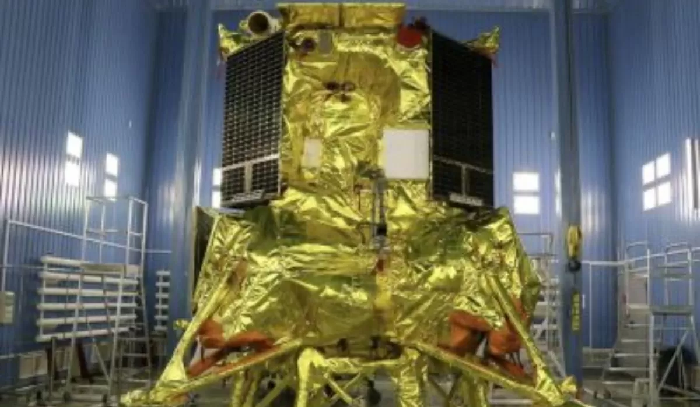At the Russian automatic station «Luna-25», which is moving towards the Earth’s satellite, the first scientific instruments were turned on. This was announced by the press service of Roscosmos.
“Today, the first switching on of the scientific equipment complex developed by the IKI RAS (Space Research Institute RAS. — RBC) was carried out in space flight conditions. Service telemetry information from all devices showed their regular functioning,” the report said.
Scientists have already received the first measurement data, which were made by the instruments during the flight, and have begun to process them, the state corporation specified.
The Luna-25 station is equipped with several types of instruments:
- the lunar manipulator complex (LMK), which is necessary for excavating regolith (the surface layer of lunar soil) and taking its samples;
- laser mass analyzer LAZMA-LR designed for elemental and isotope analysis of regolith;
- lunar infrared spectrometer with a television camera (LIS-TV RPM) for tracking the working field of the manipulator. With its help, you can look into the excavated LMK space;
- active neutron radiation detector (ADRON-LR). This is a device for monitoring and studying the distribution of ice on the Moon, as well as remote analysis of the terrain for its presence;
- ARIES-L panoramic ion energy-mass spectrometer for detecting ions in the energy range from 10 eV (electronvolt) to 5 keV (kiloelectronvolt) and neutral particles of the lunar exosphere (in the case of the Moon, we are talking about the entire atmosphere). The device will study the exosphere of the Moon, which consists of ions and neutral atoms;
- dust monitoring device for measuring fluxes and main parameters of lunar dust particles.
Which of these devices have already been turned on, the press service of Roskosmos did not specify.
The automatic station «Luna-25» was developed by employees of the rocket and space complex NPO named after S.A. Lavochkin. This will be the first station in the history of modern Russia that will reach the surface of the Moon, the last Soviet descent vehicle visited the satellite in 1976.












Оставить коммент.